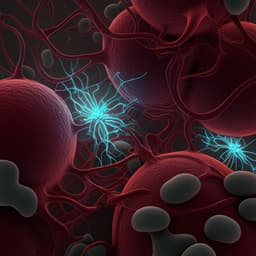
Psychology
Anxious individuals shift emotion control from lateral frontal pole to dorsolateral prefrontal cortex
B. Bramson, S. Meijer, et al.
This research explores the intricate workings of emotional behavior control in highly anxious individuals, revealing vulnerabilities in the brain circuits responsible for such control. Conducted by Bob Bramson, Sjoerd Meijer, Annelies van Nuland, Ivan Toni, and Karin Roelofs, the study uncovers how anxious participants exhibit unique neural characteristics that impede their emotional action control, offering insightful implications for understanding anxiety disorders.
Playback language: English
Related Publications
Explore these studies to deepen your understanding of the subject.







